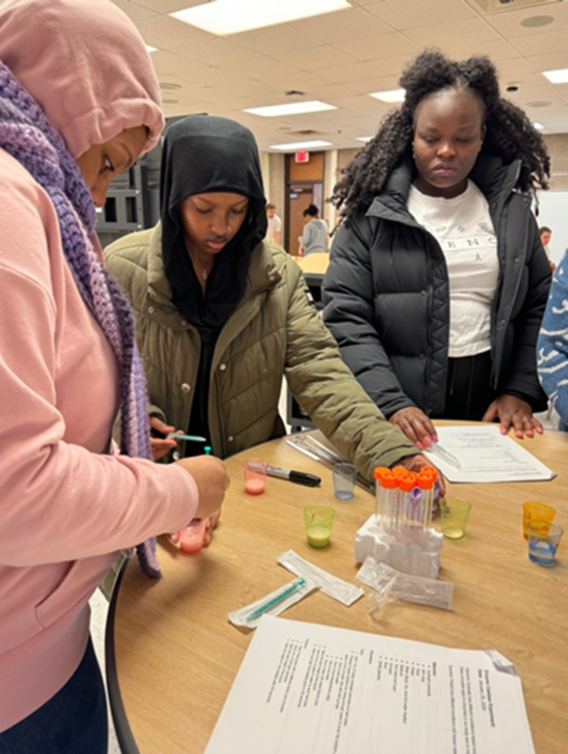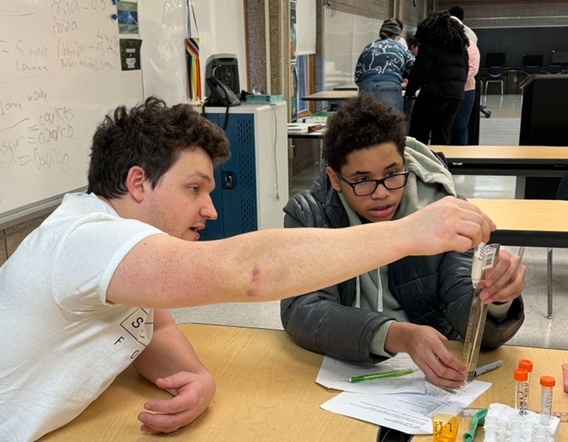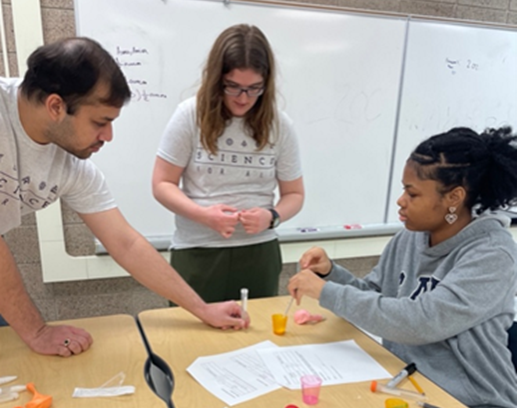January 2024 Visit
Experiment Leads: Kaylee Barr and Michael Leyden
In January, the Science for All (SFA) team traveled to Heritage STEM Academy to work with the ninth grade class. Michael Leyden and Kaylee Barr led the students through a short presentation, discussing concepts such as cells, enzymes, uses of enzymes, catalysts, and protein denaturation. Before the experiment, they showed the structure of the enzyme catalase and described how this enzyme is present in the cells of many biological organisms including human blood and liver cells. It was explained to the class how the enzyme catalase can act as a catalyst in the decomposition of hydrogen peroxide. This reaction is of biological importance because it breaks down hydrogen peroxide to avoid the formation of reactive oxygen species which can lead to cell death. Yeast and potatoes contain this enzyme and were used in this experiment to study enzyme catalase activity.

The experiment was designed to explore how pH level (acidic or neutral) and water temperature (cold, room, or hot) affect catalase activity. For the yeast experiment, yeast suspended in water was added to a soapy hydrogen peroxide solution. The students directly measured how much oxygen was trapped by the soap bubbles by marking the position on the test tube before and after yeast addition. As many of the students hypothesized, the cold yeast formed fewer bubbles than the room temperature yeast due to lower enzyme activity at a lowered temperature. Additionally, some students were excited to see that the yeast in hot water and yeast in lemon juice produced no bubbles, indicating that the hot water temperature and acidity had denatured the enzyme catalase, causing it to lose its function.

After testing water temperature and pH level with the yeast, the students tested 3 different potato cuts (i.e., large, medium, small) in test tubes. Hydrogen peroxide was added directly to the tubes and the students again measured the bubble height. Finally, at the end of the experiment, the students were directed to pick a variable of their choice to study with balloons instead of soap as an oxygen trapping method. The students were excited to play around with the experiment using a variable of their choice.
